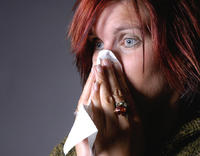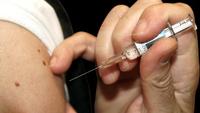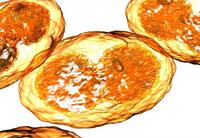-
Biological weapons: U.S. must not repeat the failure of imagination
Joel McCleary, a biological weapons expert, is the chairman and co-founder of Q Global and the founder of PharmAthene; he argues that the U.S. government has not done enough to protect the nation against a biological attack, warns of the need for presidential leadership, and underscores the dangers of biological weapons
-
-
Scientists "domesticate" -- and disarm -- malaria parasite
Malaria is one of the Earth’s most notorious scourges, accounting for more than 250 million new cases — and one million deaths — each year, researchers have developed a novel technique to “tame” the malaria parasite by forcing it to depend on an external supply of a vital chemical; this could help to speed up drug development and provide the basis for the first effective vaccine against malaria
-
-
Lawmakers struggling to end critical medicine shortage
Critical shortages for medicines needed in treating life-threatening illnesses have lawmakers and public health officials scrambling to find solutions; this year alone, a record high of more than 180 drugs crucial for treating childhood leukemia, breast and colon cancer, infections, and other diseases have been declared in short supply
-
-
Overcoming dangerous antibiotic-resistant bacteria
Scientists have successfully reengineered an important antibiotic to kill the deadliest antibiotic-resistant bacteria; the compound could one day be used clinically to treat patients with life-threatening and highly resistant bacterial infections
-
-
Coriander oil tackles food poisoning and drug-resistant infections
Coriander oil has been shown to be toxic to a broad range of harmful bacteria; its use in foods and in clinical agents could prevent food-borne illnesses and even treat antibiotic-resistant infections, according to the authors of a study published in the Journal of Medical Microbiology
-
-
How did H1N1 become an pandemic?

The last century has seen two major pandemics caused by the H1N1 virus — the Spanish Flu in 1918 and 2009’s Swine Flu scare, which had thousands travelling with surgical masks and clamoring for vaccination; scientists, however, did not know what distinguished the Swine Flu from ordinary influenza in pigs or seasonal outbreaks in humans, giving it the power to travel extensively and infect large populations; until now
-
-
Medical silver bullet: New drug cures most viral infections

Researchers at MIT’s Lincoln Lab have developed technology that may someday cure the common cold, influenza, and other ailments; the researchers tested their drug against fifteen viruses, and found it was effective against all of them — including rhinoviruses that cause the common cold, H1N1 influenza, a stomach virus, a polio virus, dengue fever, and several other types of hemorrhagic fever
-
-
Gold nanoparticles help to diagnose flu in minutes
Arriving at a rapid and accurate diagnosis is critical during flu outbreaks, but until now, physicians and public health officials have had to choose between a highly accurate yet time-consuming test or a rapid but error-prone test; University of Georgia researchers offer a solution
-
-
Transforming acids into bases
Chemists at the University of California, Riverside have accomplished in the lab what until now was considered impossible: transform a family of compounds which are acids into bases; the research offers vast family of new catalysts for use in drug discovery, biotechnology
-
-
Anthrax vaccine program demonstrates 36 month product stability
Maryland-based PharmAthene has achieved an important program milestone in its recombinant protective antigen (rPA) anthrax vaccine program, and demonstrated thirty-six month stability of its rPA drug product candidate; the data suggest that the rPA product candidate is both highly stable and potent; stability has historically been a stumbling block for other recombinant anthrax vaccine programs
-
-
Natural enzyme can defend against terrorists' nerve agents

Chemicals called organophosphates, found in common household insecticides, can be just as harmful to people as to insects; organophosphates could be released on an industrial scale, through an act of terror or accident, attacking the nervous system by inactivating an enzyme called acetylcholinesterase (AChE); scientists are devising drugs to treat and prevent the toxic effects of organophosphates and related chemicals
-
-
Natural antibody brings universal flu vaccine closer

Annually changing flu vaccines with their hit-and-miss effectiveness may soon give way to a single, near-universal flu vaccine, according to a new report from scientists at the Scripps Research Institute and the Dutch biopharmaceutical company Crucell; they describe an antibody which, in animal tests, can prevent or cure infections with a broad variety of influenza viruses, including seasonal and potentially pandemic strains
-
-
Promise of vaccine against deadly malaria parasite

Every year, 10,000 pregnant women and up to 200,000 newborn babies are killed by the malaria parasite; the body’s immune system normally attacks any foreign body, but since our spleen constantly filters our blood and removes ruined or deform blood cells, the body’s natural defense does not need to check the blood; the malaria parasite exploits this fact by using its advanced arsenal of protein hooks to attach itself to the inner side of the blood vessel; researchers find a soltuon
-
-
Fate of last smallpox virus samples to be determined today

The World Health Organization officially declared in 1979 that smallpox has been eradicated; in the three decades since the WHO declaration, the Centers of Disease Control and Prevention (CDC) in Atlanta, Georgia, and a Russian government laboratory near Novosibirsk have been the last two places to keep samples of the smallpox virus; during this time, there have been many calls by scientists and advocates to destroy these last samples — some of these calls accompanied by dark hints that the two countries wanted to hang on to the samples in order to use them as a basis for a future bio-weapon; the United States opposes the destruction, saying that the live samples are needed to develop vaccine with less adverse side effects as well as two other related drugs; a committee of the World Health Organization is meeting today in Geneva to make a decision
-
-
Secrets of plague unlocked with stunning new imaging techniques
Sandia Labs researchers have developed a super-resolution microscopy technique that is answering long-held questions about exactly how and why a cell’s defenses fail against some invaders, such as plague, while successfully fending off others like E.coli
-
More headlines
The long view
Vaccine Integrity Project Says New FDA Rules on COVID-19 Vaccines Show Lack of Consensus, Clarity
Sidestepping both the FDA’s own Vaccines and Related Biological Products Advisory Committee and the CDC’s Advisory Committee on Immunization Practices (ACIP), two Trump-appointed FDA leaders penned an opinion piece in the New England Journal of Medicine to announce new, more restrictive, COVID-19 vaccine recommendations. Critics say that not seeking broad input into the new policy, which would help FDA to understand its implications, feasibility, and the potential for unintended consequences, amounts to policy by proclamation.
